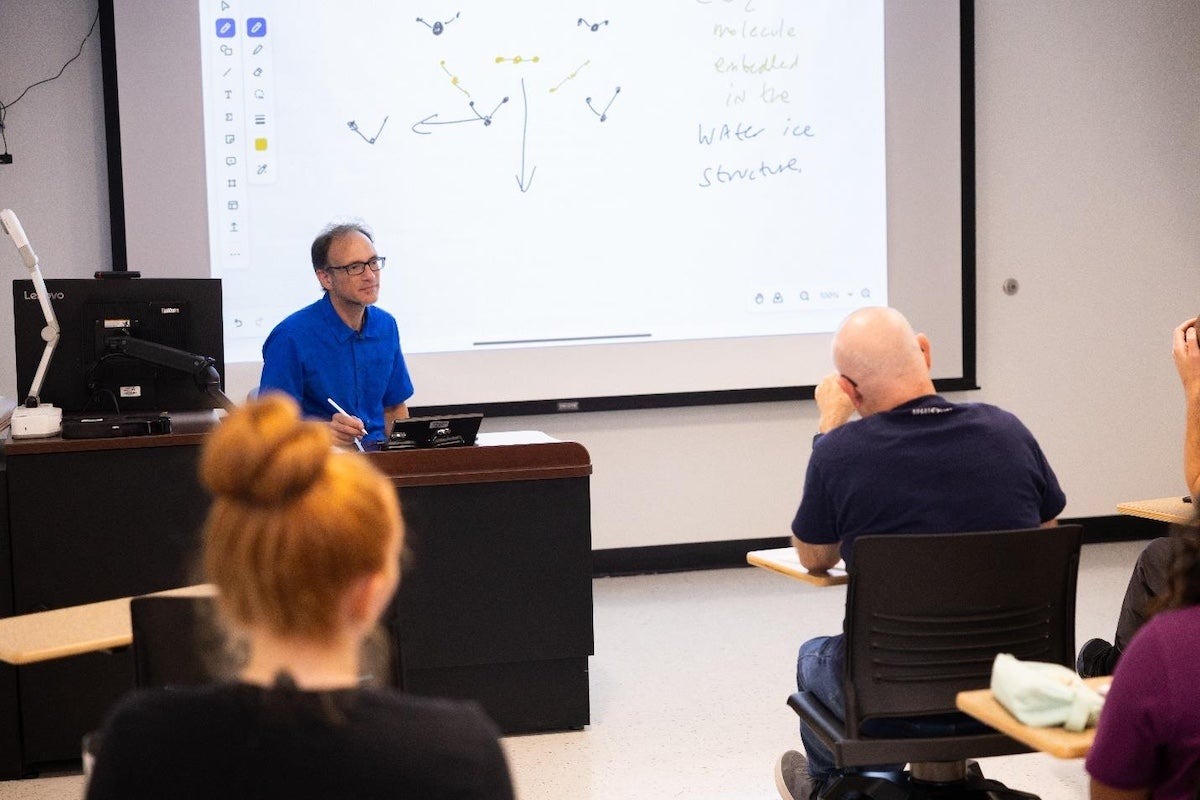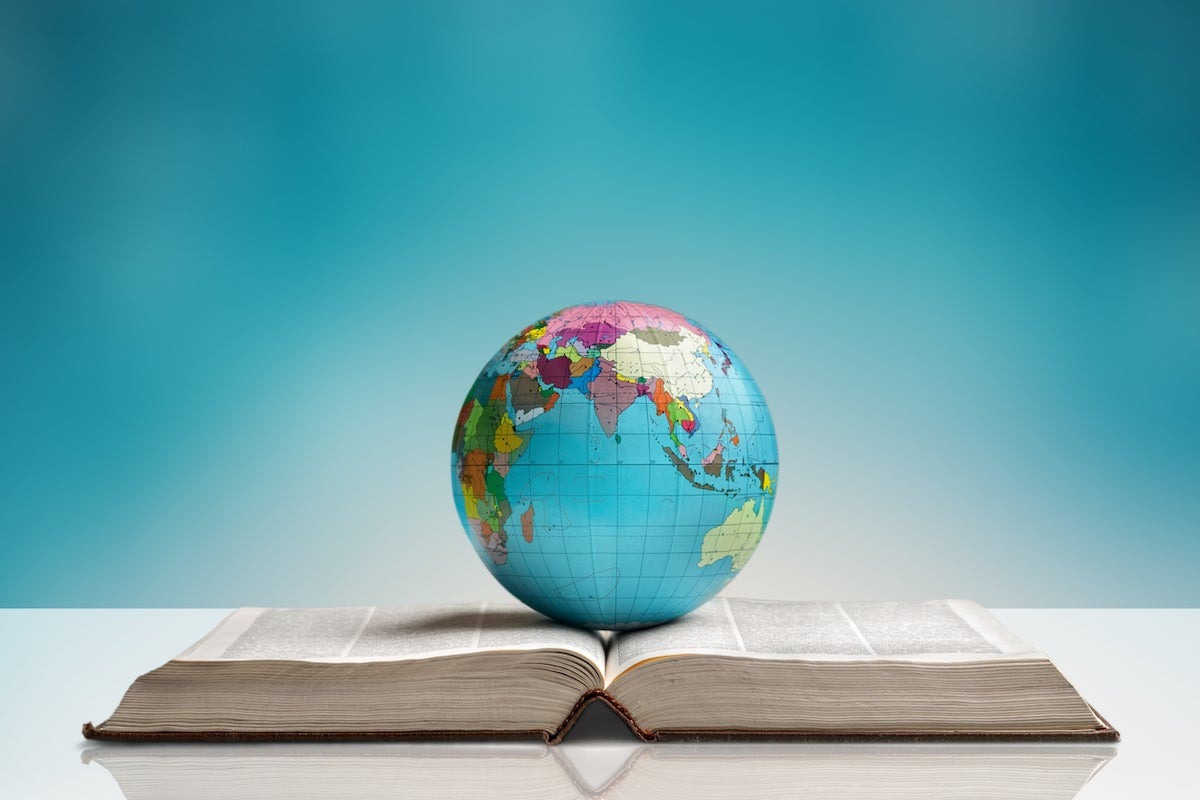UCF Researcher Part of New NASA Mission to Map Water on Moon
NASA gave a team of researchers the green light to begin building instruments that will be launched on a satellite to scan and create high-resolution maps of water on the moon.
In June 2019, NASA selected the Lunar Trailblazer mission, along with three other proposed missions, for further study under its Small Innovative Missions for Planetary Exploration (SIMPLEx) program. Today, NASA gave the international team, which includes UCF planetary geologist Kerri Donaldson Hanna, the go-ahead to get ready for launch in 2025.
“There have been a lot of studies recently indicating there is water on the moon and now for the first time we’ll actually be able to identify water’s unique spectral signature with our instruments and get a better idea of whether its water, water ice, or hydroxyl [compound of hydrogen and oxygen] based on that spectral signature and the measured surface temperatures,” says Donaldson Hanna, a co-investigator on the mission. “Water is an important resource for future astronauts and robotic missions to use for anything from hydration to fuel.”
Caltech planetary sciences Professor Bethany Ehlmann is leading the science portion of the mission while the Jet Propulsion Lab in California will manage the flight mission for NASA. Lockheed Martin is providing the spacecraft. JPL is providing the High-resolution Volatiles and Minerals Moon mapper, a visible-shortwave infrared imaging spectrometer, and the University of Oxford is providing the Lunar Thermal Mapper, a thermal infrared imaging radiometer. The instruments will be used to scan the moon from a height of about 62 miles.
Once the satellite’s solar panels are fully extended, it will measure about 11½ feet long. The satellite will spend more than a year orbiting the moon collecting data.
Donaldson Hanna is a co-investigator working with the mission and an assistant professor of physics at UCF. She is tasked with making precise measurements of lunar light to better understand the geology and composition of the moon’s surface. Objects can emit their own light beyond our visible spectrum, and this infrared light is a product of surface temperature as well as composition. A thermal imager such as on this mission can measure emitted infrared light at select wavelengths, and Donaldson Hanna is fine-tuning these channels to reveal the moon’s composition.

Once the satellite is launched, Donaldson Hanna and her team of undergraduate and graduate students at UCF will focus on analyzing the data collected to determine the composition of parts of the moon.
As a graduate student at Brown University, Donaldson Hanna was a science team member of the Diviner Lunar Radiometer Experiment onboard NASA’s 2009 Lunar Reconnaissance Orbiter and the Moon Minerology Mapper onboard India’s 2008 Chandrayaan-1 mission. Donaldson Hanna’s contributions on Diviner helped produce the first compositional maps of the moon’s rocks and soil based on its thermally emitted radiation. The Moon Mineralogy Mapper discovered water on the moon, generated mineralogical maps of the moon, and was included in India’s first lunar spacecraft.
“It’s kind of a dream to see work you did as a graduate student and postdoctoral researcher push forward,” she says. “Early in my career as a graduate student, the Constellation program was shut down and going back to the moon seemed so far away … but some of us persevered and now with Artemis ramping up and all these new instruments coming online, well it’s a very exciting time to be working in lunar science again.”
The Lunar Trailblazer map is projected to show tiny amounts of water and of hydroxyl on the sunlit side of the moon and at the poles. Trailblazer will also peer into shadowed craters to map water ice deposits. Aside from helping investigators understand how water works on an airless body like the Moon, the maps will also be useful for planning future human and robotic missions to the moon.
“We’re excited to pioneer NASA’s use of small satellites to answer big planetary science questions,” says Ehlmann. “By making detailed maps of water on the moon we expect Trailblazer will hugely advance our understanding of something we don’t fully understand: the water cycle on airless bodies. Given the importance of water on the moon for future robotic and human missions, the Lunar Trailblazer mission team is excited to provide the critical base maps that will guide this future exploration.”
Donaldson Hanna has a bachelor’s degree in space sciences from the Florida Institute of Technology, and a master’s degree and a doctorate in geological sciences from Brown University. Donaldson Hanna also conducted research within the atmospheric, oceanic, and planetary physics sub-department at the University of Oxford before receiving a UK Space Agency Aurora Research Fellowship to continue her research at Oxford. While at Oxford, she held a junior research fellowship at Christ Church College and was awarded the early career Winton Capital Geophysics Award from the Royal Astronomical Society.
Her research focuses on understanding the formation and evolution of airless bodies such as the moon, Mercury, Mars’ moons, and asteroids. She pursues this research interest using several methods including telescopic observations, making laboratory measurements of airless body analogues to compare with the remote sensing observations, and developing space instrumentation for observing airless bodies. She also participated in NASA’s OSIRIS-REx mission.
Share This Article

UCF Launches 1st Planetary and Space Sciences PhD Program in Florida
As SpaceU, UCF is pushing the boundaries of exploration by launching a groundbreaking new doctoral program in the planetary and space sciences. Now, aspiring researchers can apply to the inaugural cohort of...
Latest News

UCF Fulbright Awardees Bring Their Passions to a Global Scale
Each year, the Fulbright Program offers opportunities for American students to conduct research, teach English, or pursue graduate study abroad. One of the most prestigious international exchange programs in the...

Unleash Opportunities with a UCF Graduate Degree
A graduate degree has the power to unleash opportunities by expanding careers, opening doors to new fields, and increasing lifetime earnings. According to the U.S. Bureau of Labor Statistics (2024),...

UCF Rosen College Ranks No. 1 in the World for Hospitality Education for 2025
One of the most anticipated theme parks in the world is about to open its gates — and right next door, the No. 1 hospitality and hotel management school on...

From Engineering to Counseling, Graduate Programs Highly Ranked by U.S. News Propel UCF Alumni to Thrive in Career
While pursuing a doctoral degree in aerospace engineering at UCF , Tommy Genova ’20MS ’20PhD worked alongside Professor Kareem Ahmed, one of the world’s foremost researchers in hypersonics and combustion. He played a...